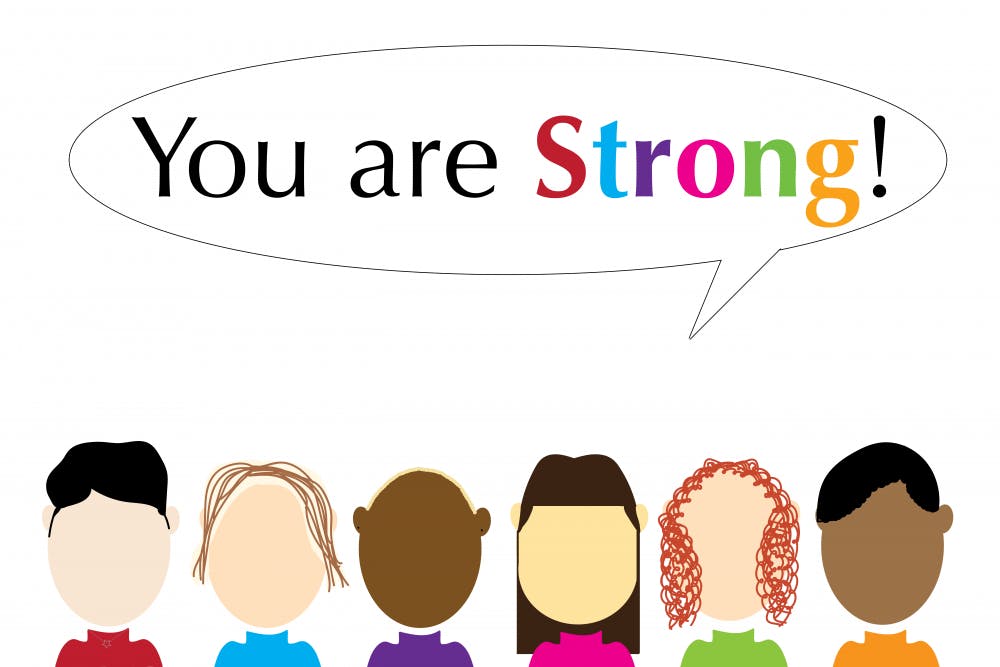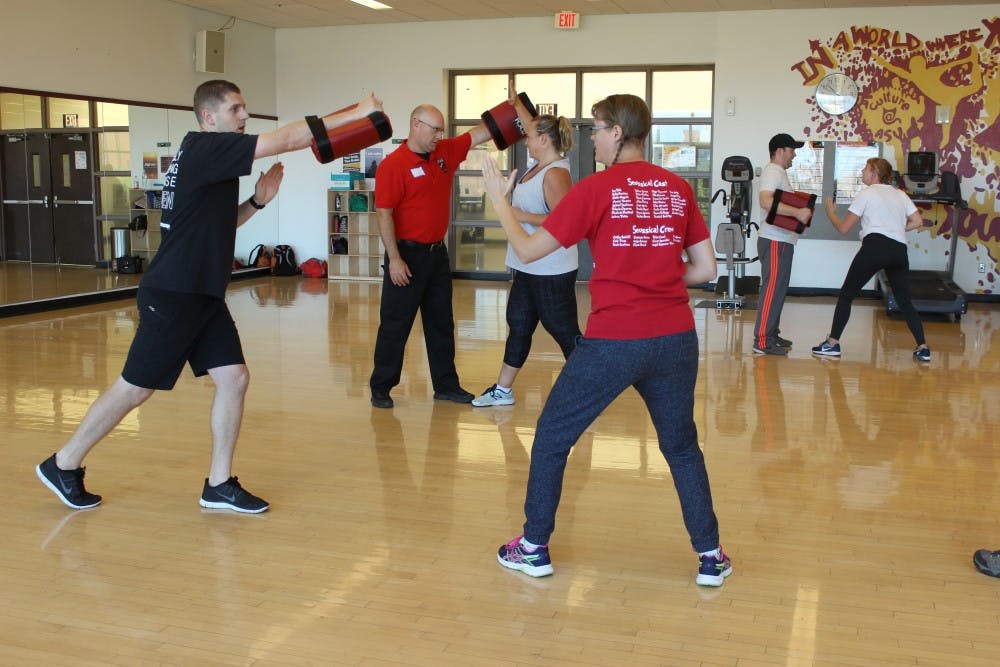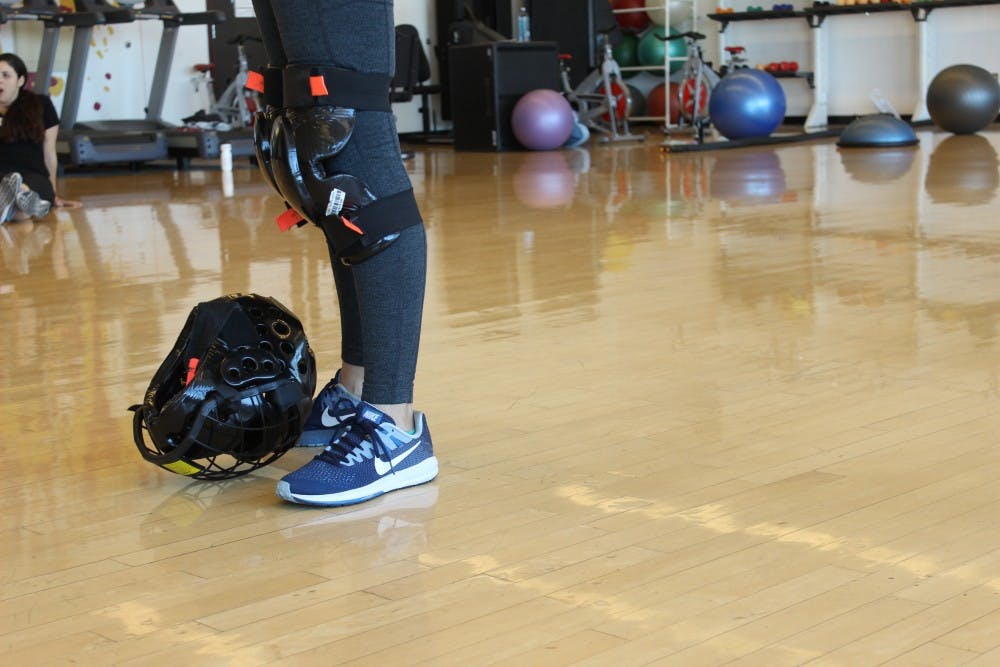“No!” the room echoed repeatedly, as the strength of the women’s voices became a form of empowerment, a main goal for the Rape Aggression Defense Systems classes.
The self-defense classes are offered free to the ASU community and originated in 1989 in Louisiana. Used internationally since, the program was rejuvenated at ASU around 2013 and is offered in three different forms by the ASU Police Department: R.A.D. Basic, R.A.D. for Men and R.A.D. Advanced. The R.A.D. programs are self-described to offer “realistic, self-defense tactics and techniques.”
The basic level class for women is typically a 12-hour course held in a span of two days. The first day is a lecture about four hours long, in which a certified officer “provides instruction in prevention and risk reduction strategies” through a comprehensive reference manual. The second day, students get to learn hands-on techniques of self-defense during an eight-hour session, including an ending simulation to put students’ newly learned skills to the test.
Officer Becky Garcia has worked with the ASU Police Department for nine years and is currently the crime prevention officer and participates as one of the instructors. Garcia says there is a need for women to be empowered in protecting themselves.
Women are taught to be polite and nice to strangers, says Garcia, but she hopes to dispel that through the class.
“We’re all taught–be nice, be quiet, don’t be assertive. Don’t worry about that,” Garcia says, confidently. “Put your safety first!”
Garcia says the statistics have unfortunately grown over time, especially among students’ freshmen and sophomore years, a target age range for victimization.
At ASU in 2015, “3.1 percent of female students and 1.2 percent of male students reported they experienced an attempted or completed sexual assault in the previous year (2014),” according to Live Well @ ASU.
Also according to Live Well @ ASU, “7.8 percent of female students and 3.6 percent of male students reported that they experienced sexual touching against their will in the previous year (2014).”
Garcia says having a passion for teaching the course as a part of the law enforcement team is important in serving the community in hopes to teach others how to avoid or combat such incidents.
“All of us who have gone through it show our passion for working with the community,” Garcia says. “We’re all officers, and extra training is always good, but we always want to have ways to reach out.”
Garcia and the other instructors say their passion for teaching the RAD classes lies in their goals to help women feel empowered, as a “whole new world opens up to them” through seeing what they are capable through the class.
“It’s about empowering them and giving them that will to fight if they need to,” says Jesse Fletcher, an ASU Police patrol officer and instructor for the course. “In the beginning of the class, they’re just walking in, they don’t really have any basics of self-defense. By the end of the class, they’re punching me and they’re kicking me (in the simulation). They’re finding out they’re using their voice, coming out of their comfort zone so that they don’t become a victim, which is really important.”
One of the main points emphasized during the lecture and the class was to always be aware and be empowered.
Earl Rosencrantz, an ASU Police patrol officer and instructor for the class, says the class aims to give students a “vicious” mindset in always having situational awareness.
According to the R.A.D. participant manual, 90 percent of self-defense consists of being aware of one’s surroundings under risk awareness, risk reduction, risk recognition, and risk avoidance as they learn how to avoid or handle a situation in which physical defense would be needed.
“They have to look at people, specifically men, and every time they meet someone new, just look at them and say, ‘OK, how would I defend myself against this person if I had to? What would I do?’” says Rosencrantz. “They just need to think along those lines more often than not.”
Biological sciences senior Ariel Heredia says the class is not about walking around being paranoid, but rather being aware that anything can happen. Heredia says the class helped give her confidence in knowing how to handle this type of situation, should the situation arise.
“I do feel empowered doing it,” Heredia says. “Especially when acting out the punches and kicks that they teach you. It is like, ‘Hey, I can protect myself. I can use what I have to protect myself.’ This part is showing me that I am strong and capable of protecting myself.”
R.A.D. Basic is limited to women’s knowledge and eyes only. As the instructors say, it is important for the information and techniques learned in class to remain confidential and kept away from any possible perpetrators. Though no men are allowed, they have sparked interest in a class of their own.
In response, R.A.D. for Men was recently implemented at ASU serving as a de-escalation class as men are attacked differently than women, says Rosencrantz. In addition, it will also be aimed at teaching men how to treat and respect women.
“We’ll give men some pointers on how to treat women respectfully and to ask before they do anything, make sure they have consent,” says Rosencrantz.
R.A.D. Advanced is a course requiring a minimum of 25 hours after the basic level has been completed. Techniques learned in basic are taught more in depth through the advanced class.
R.A.D. Basic for Women classes are available throughout the rest of the semester and is open to all women.
“They’re going to be empowered when they go through this course because they see, physically, that they can take care of themselves and that they can get a man off of them should they need to,” says Rosencrantz. “The more physical empowerment you have, the more confidence and emotional empowerment you’re going to have.”
Reach the reporter at tespana@asu.edu or follow @thaliamespana on Twitter.
Like The State Press on Facebook and follow @statepress on Twitter.






